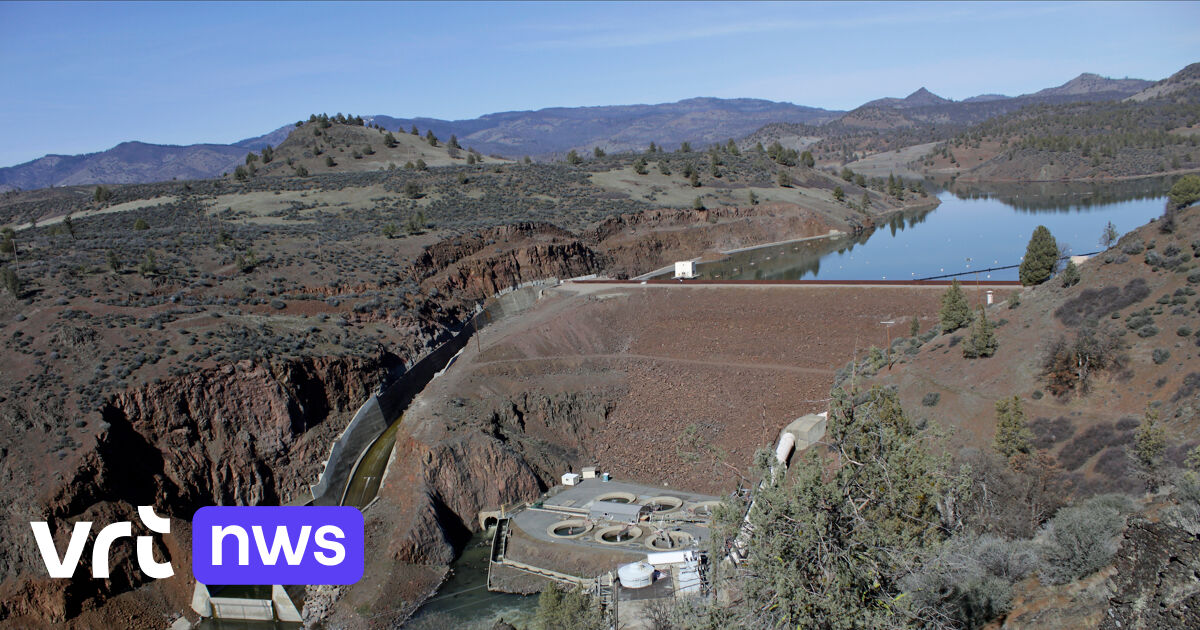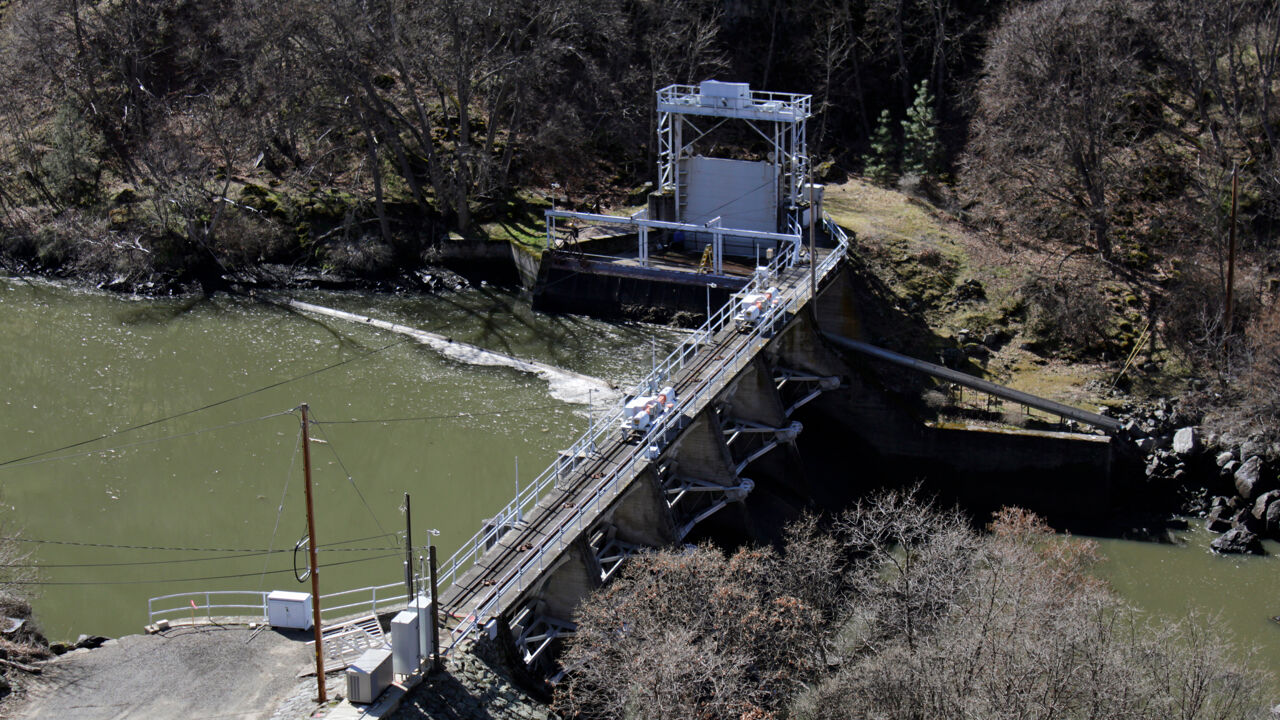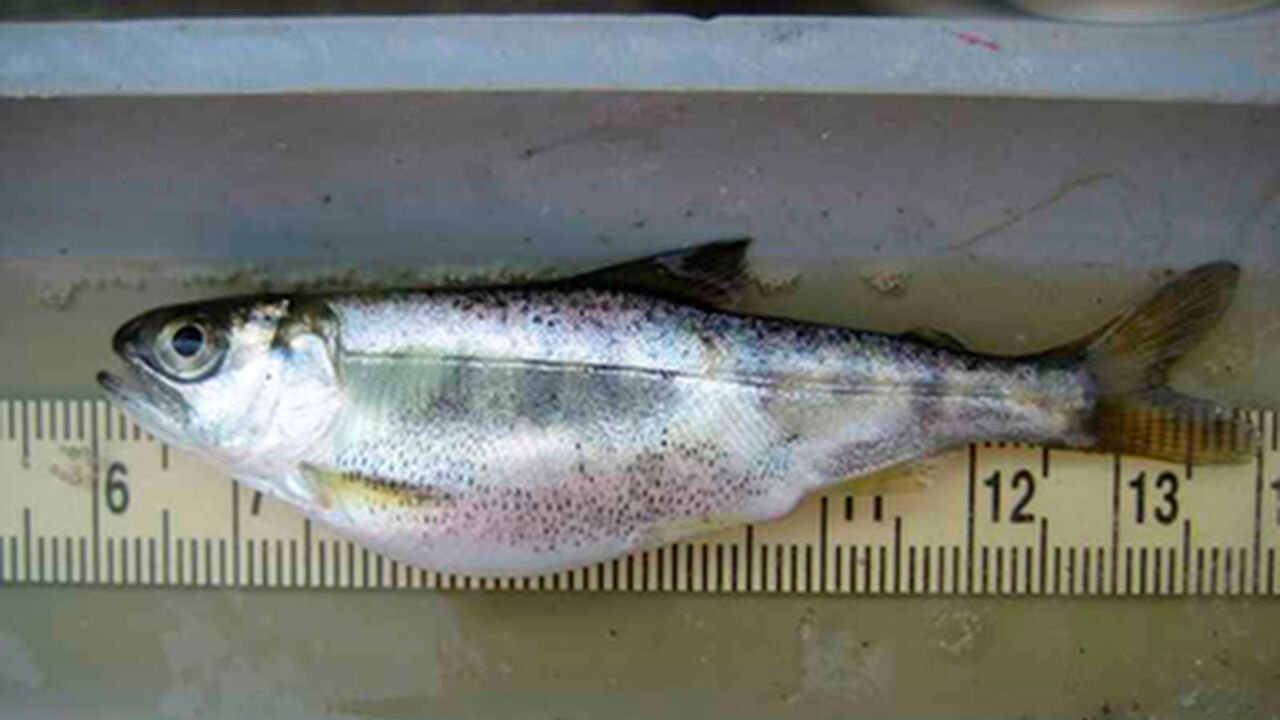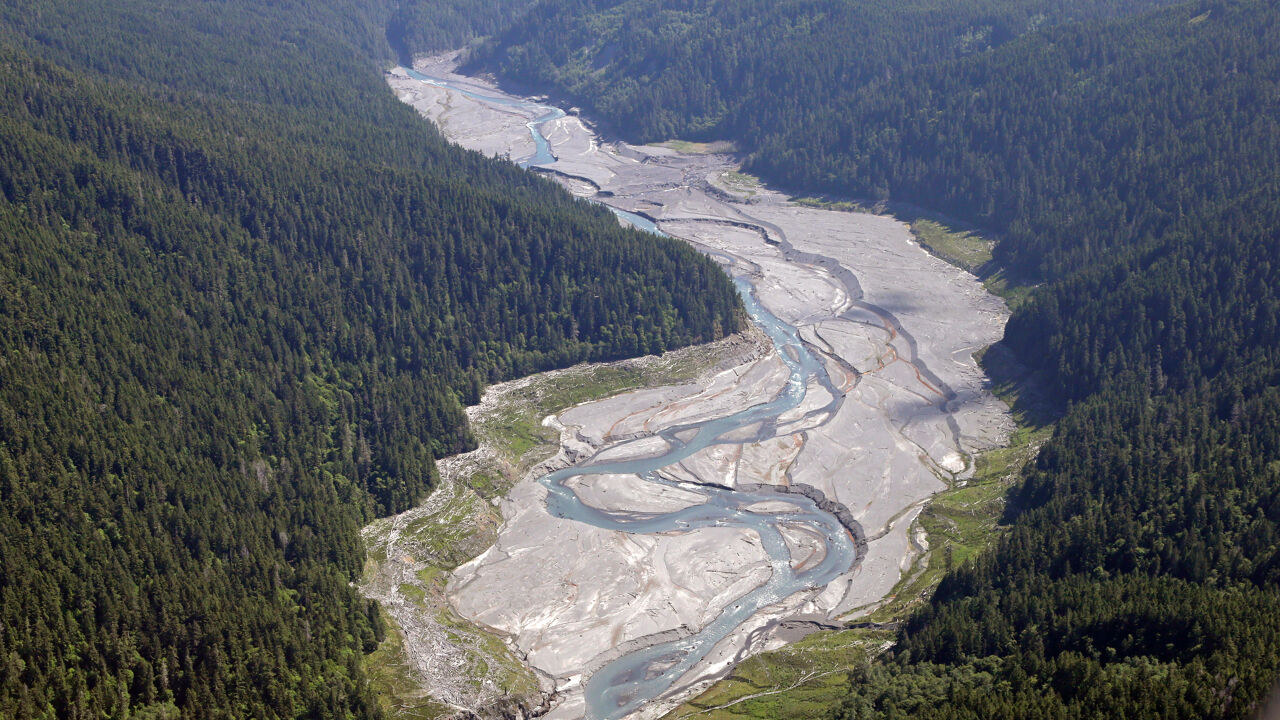The Copco-2 dam has already been demolished this summer. As a result, the first portion of the Klamath River in northern California is no longer blocked. Work to remove all remnants of the dam will continue until the end of next September.
The demolition of the Kopco-2 Dam marks the official start of the largest dam.”Dam removal project“By removing the four dams, California wants to restore the ecosystem around the Klamath River. In addition, the river can flow freely and powerfully again, which the state believes will benefit nature.”
An archive photo of the Kopco-2 Dam, the first dam to be demolished.
Copyright 2020 The Associated Press. All rights reserved.
Water is very dangerous for humans and animals
This is not a redundant measure, as various American studies and reports have shown. At 256 miles (414 km) long, the Klamath River is the third largest American river flowing into the Pacific Ocean. Not only agriculture and mining take place along the riverbank, but also logging and fishing.
Dam building between the 1920s and 1960s “tamed” the river and created water reservoirs such as the Iron Gate Reservoir. This had a huge impact on the ecosystem. Thus, fish in the river no longer had free passage to the headwaters and upstream of the river, which had traditionally been a refuge from cold waters. The river’s salmon have particularly suffered from dams.
Taming the river also meant more standing water, which reduced the amount of oxygen in the water. At the same time, drought and heat waves caused water temperatures to rise and harmful substances from local agriculture and mining to enter the water.
This gave the toxic bacteria and algae a free rein. Every year the state must issue a warning that the water is extremely dangerous to human and animal health. People were no longer allowed to swim in the water, while salmon in the river became sick and died en masse. In 2002, about 34,000 salmon died in the river as a result of poor water quality. This was a slap in the face to the local Native Americans, who depend on fishing from the river.
Archive photo of an injured Chinook salmon, seen through the fish’s swollen belly.
“Restore the river? Remove the dam”
So the river is not in a very healthy condition to say the least. That’s why the state of California started a project to remove water dams along the river. Anne Willis, who serves as regional director for American Rivers, said the quickest way to restore the river is to remove the dam. “The moment the water dries up, the river starts to recover.”
The state of California wants to complete the project by the end of 2024. Iron Gate Dam, which opened in 1964, is the largest of the four and therefore will be the last to disappear. With this, the Undam the Klamath movement will achieve success after nearly 20 years of campaigning.
“To return to the wild”
The American project fits into the concept.”Rewilding“. This means that people want to return the area to its original state. Especially in the context of climate change, the movement is gaining more and more support. By removing the dams, California hopes that the river will follow its original path again and that nature will flourish along the river banks again.” To give a boost, local plants will be planted along the river banks.
It has been proven in the past that nature clearly recovers when the dam is gone. In 2012 and 2014, Washington state removed two water dams along the Elwha River. Research shows that salmon numbers increased significantly within ten years and that other animal species have since returned to the river.
Archive photo of the Elwha River in Washington.

“Creator. Award-winning problem solver. Music evangelist. Incurable introvert.”










More Stories
British military spy satellite launched – Business AM
Alarming decline in the Caspian Sea
Lithuania begins construction of military base for German forces